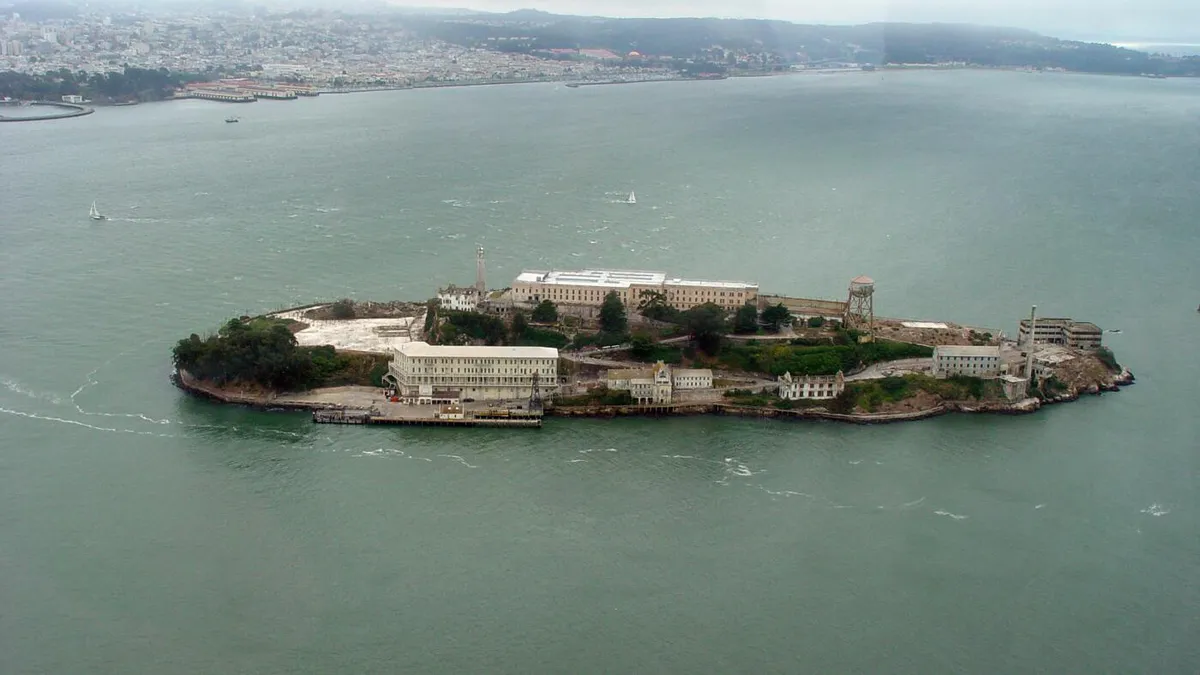
In a surprising announcement, President Trump has declared his intention to order federal agencies to rebuild and reopen Alcatraz, the infamous maximum-security prison that has been closed for over 60 years. This directive was shared through a post on Truth Social, where Trump emphasized the need for a “substantially enlarged and rebuilt Alcatraz” to house America’s most dangerous criminals, whom he referred to as the nation's “most ruthless and violent offenders.”
The historic former U.S. Penitentiary, known as Alcatraz, opened its doors in 1934 and has since become a symbol of the American criminal justice system. Located approximately 1.5 miles north of San Francisco’s iconic Fisherman’s Wharf, Alcatraz is often referred to as The Rock. The prison's architecture and rugged terrain create a formidable backdrop to its storied past, which includes housing notorious criminals such as mobster Al Capone.
Originally, Alcatraz was designed to concentrate the most incorrigible inmates in one facility, effectively separating them from less dangerous prisoners. Trump’s recent message suggests a desire to restore Alcatraz to its original dual purpose, which was not only to confine violent offenders but also to assure the law-abiding public that the federal government was committed to combating rampant crime during the tumultuous 1920s and 1930s.
In his post, Trump expressed his vision for the reopened facility, stating, “The reopening of Alcatraz will serve as a symbol of Law, Order, and Justice.” However, he did not outline a specific timeline for the reopening of the prison. The National Park Service has yet to respond to inquiries regarding the president’s ambitious plans for Alcatraz, which is currently managed as a museum within the Golden Gate National Recreation Area.
While the idea of reopening Alcatraz may resonate with some, it comes with significant challenges. The Federal Bureau of Prisons noted that Alcatraz was initially closed in 1963 due to its high operating costs, which were nearly three times greater than other federal prisons. The isolation of the island necessitated that all supplies—including food, fuel, and even fresh water—be transported by boat, leading to logistical nightmares. At the time of its closure, nearly one million gallons of water were shipped to the island each week.
Since its closure, Alcatraz has been transformed into a museum, reflecting the societal context of its time. According to the National Park Service, the prison represents the federal government’s response to post-Prohibition, post-Depression America, and serves as a historical reminder of the era's social dynamics. The park service notes that the prison was an experiment in managing difficult inmates, with its operational model later influencing the design of other high-security facilities, such as the prison in Marion, Illinois.
Alcatraz’s journey from a military outpost under President Millard Fillmore in 1850 to a notorious prison has seen it house a variety of groups, including captured Confederates, members of the Hopi Tribe, and prisoners from the Spanish-American War. By 1933, the island was officially designated for use by the Federal Bureau of Prisons, marking the beginning of its infamous legacy.
Since returning to the White House in January, Trump has been vocal about various initiatives aimed at enhancing public safety, including strict measures against unlawful immigration. His plans extend beyond Alcatraz, as he has also proposed the establishment of a maximum-security prison in El Salvador for deported immigrants, underscoring his administration’s focus on law enforcement and national security.
As discussions around the potential reopening of Alcatraz unfold, the implications for the U.S. criminal justice system are significant. Whether this vision will come to fruition remains uncertain, but the historical significance of Alcatraz ensures it will continue to capture public interest and debate.